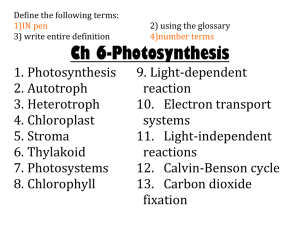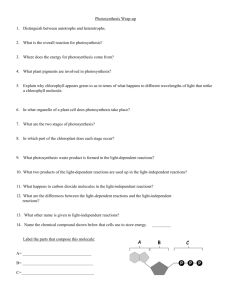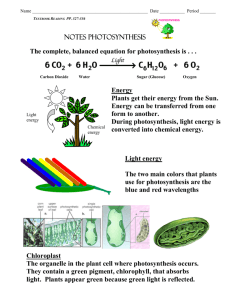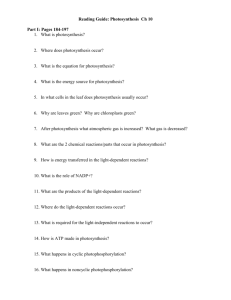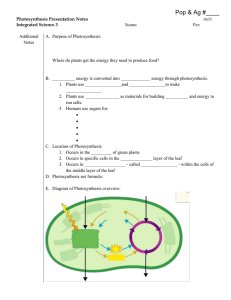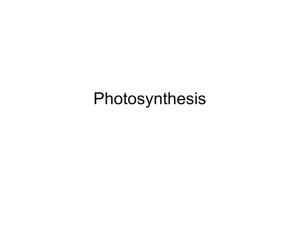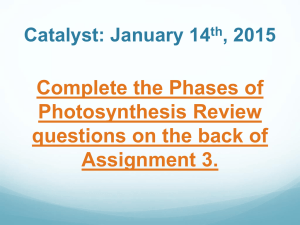Biochemistry_photosynthesis_is
advertisement
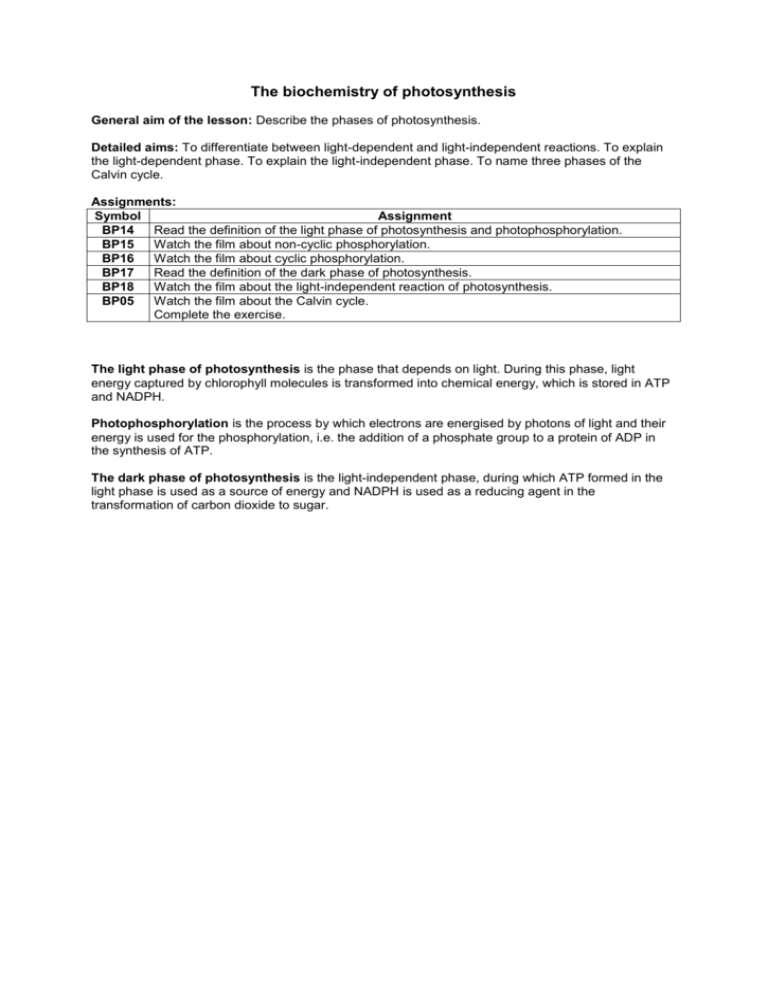
The biochemistry of photosynthesis General aim of the lesson: Describe the phases of photosynthesis. Detailed aims: To differentiate between light-dependent and light-independent reactions. To explain the light-dependent phase. To explain the light-independent phase. To name three phases of the Calvin cycle. Assignments: Symbol Assignment BP14 Read the definition of the light phase of photosynthesis and photophosphorylation. BP15 Watch the film about non-cyclic phosphorylation. BP16 Watch the film about cyclic phosphorylation. BP17 Read the definition of the dark phase of photosynthesis. BP18 Watch the film about the light-independent reaction of photosynthesis. BP05 Watch the film about the Calvin cycle. Complete the exercise. The light phase of photosynthesis is the phase that depends on light. During this phase, light energy captured by chlorophyll molecules is transformed into chemical energy, which is stored in ATP and NADPH. Photophosphorylation is the process by which electrons are energised by photons of light and their energy is used for the phosphorylation, i.e. the addition of a phosphate group to a protein of ADP in the synthesis of ATP. The dark phase of photosynthesis is the light-independent phase, during which ATP formed in the light phase is used as a source of energy and NADPH is used as a reducing agent in the transformation of carbon dioxide to sugar.

